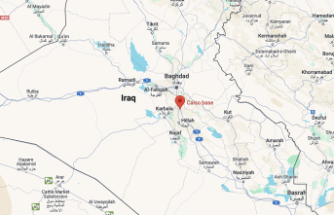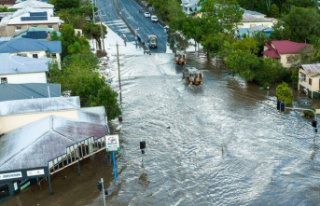Two years of Covid-19, inflation galloping, and new patterns of consumption: The fashion and clothing industry is looking for a solution to the new challenges it faces. Celine Choain (specialist in fashion and distribution at Kea) says that the first half of 2022 is marked by "year under tension".
According to INSEE, rising costs drove up clothing prices by 4.3% in May 2022 as compared to May 20,21. Celine Choain considers this an "inevitable" consequence in light of tensions in production and supply chains.
According to the specialist, consumers whose clothing spending is decreasing because of inflation are more likely to use second-hand products, to postpone purchasing, to buy on low-cost sites based in Asia or to "consume less but do better" by buying less frequently but offering higher quality parts.
Professionals in the sector are also affected by the rising inflation. They have to reconsider their production processes due to increased costs and longer logistics times. This is a legacy from the Covid-19 pandemic. Celine Choain notes that it has been crucial to secure "transport and production capabilities" for the past two years. A standard garment, which is usually made in six weeks, can now be produced in between 10 and 20 weeks.
The expert recalls that transport costs have "flamed": the average cost of shipping a container between China, the United States and China is now "13,000 dollars", compared to 3,000 before the pandemic.
Accenture fashion and luxury expert Samah Habib says that the sector has never experienced "such a context with such strong tensions". In six months raw materials have seen a strong rise, i.e. Organic cotton was 80%, cotton 28% and wool 43% respectively. Samah Habib notes that large distribution companies have "anticipated the movement by organizing or provisioning stocks of these materials in advance. This mechanically contributes towards the increase in prices.
The Covid-19 and all its consequences (confinements, gauges etc.) Celine Choain says that the Covid-19 and its consequences (confinements, gauges, etc.) have intensified a dynamic already "bearish" for 10 to 15 year. However, volumes have increased and are now approaching 2019 levels.
Samah Habib notes that the winners could be "very low-cost brand" and "very well-performing luxury sector". The Chinese Shein, which is positioned on low prices, and has been essential in ultra-fast fashion since 2008's launch, has "continued to gain momentum" in the past two years with "sales volumes that have continued to increase despite the pandemic," stated the French Institute of Fashion (IFM), and Kantar in a May Note.
Celine Choain notes that these (low-cost companies) have "operational excellence" and are able "hundreds upon new items per week". They also "create desire among consumers" with responsive supply. They raise questions about transparency and CSR.
Traditional players in the apparel industry are not willing to compromise on quality. Instead, they seek to attract a clientele that is able to do "less but better" by turning to local production in the Mediterranean ports. Samah Habib explains that it is not possible to move all production "overnight" due to "obstacles "of price, labor and know-how".












